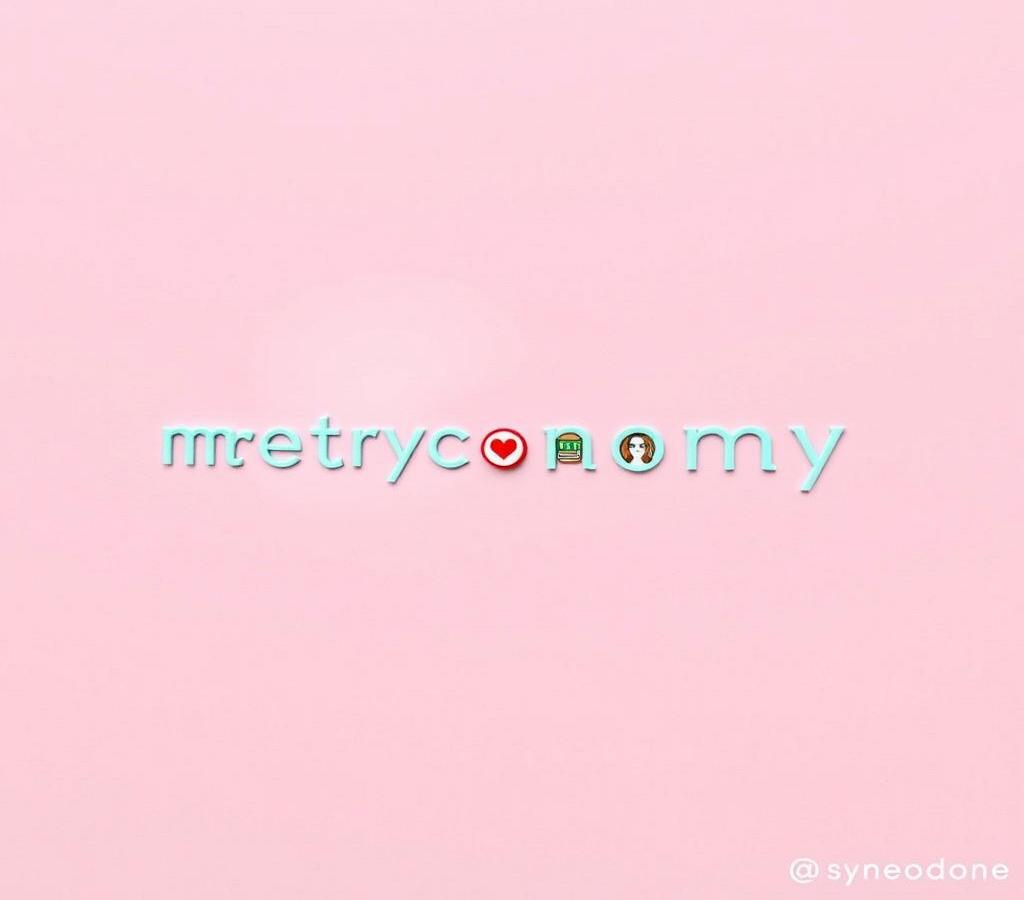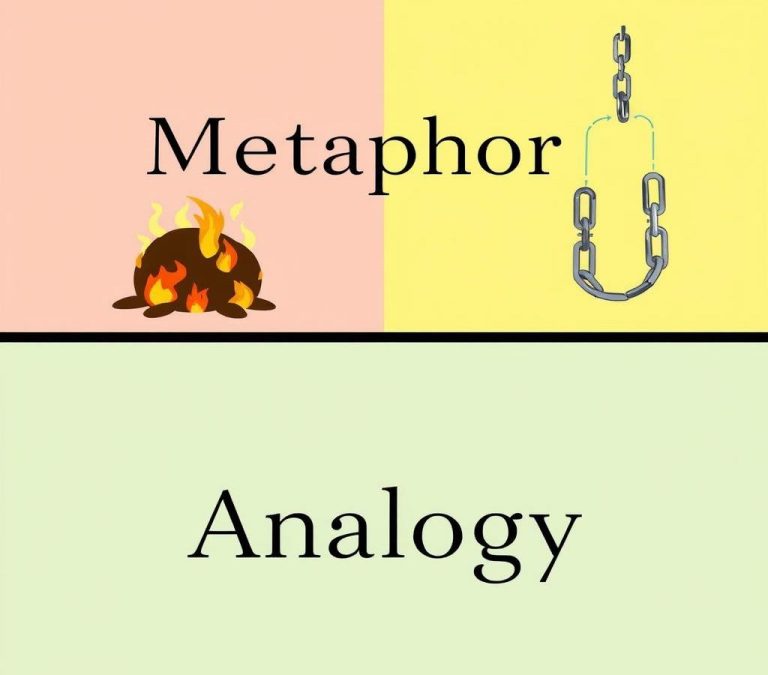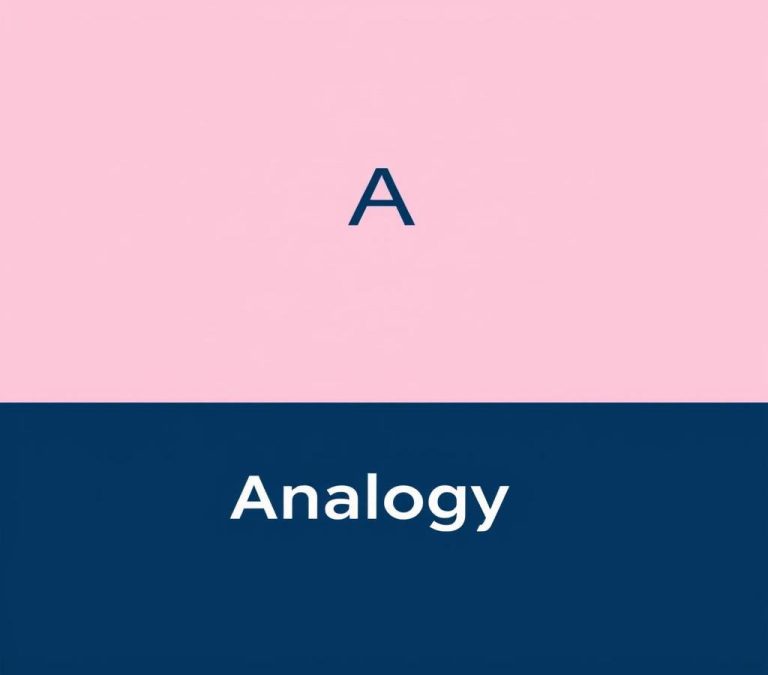Metonymy vs. Synecdoche: Grammar & Usage Differences
Understanding the differences between metonymy and synecdoche can help improve your writing. Both are literary devices that involve using one thing to represent another. Metonymy replaces the name of something with a related term, while synecdoche uses a part to represent the whole, or vice versa. Though they seem similar, knowing when to use each one can make your language more precise and impactful. This article will help you grasp these differences with clear examples and explanations.
Quick Answer
Metonymy and synecdoche are both literary devices, but they differ in how they represent something:
- Metonymy: Replaces a word with a related concept or idea (e.g., “The White House announced a new policy” where “White House” represents the government).
- Synecdoche: Replaces a word with a part of that thing (e.g., “I got a new set of wheels” where “wheels” represents a car) or vice versa (e.g., “The city is asleep” where “city” represents its inhabitants).
Why There is Confusion
One of the main reasons there is confusion between metonymy and synecdoche is that both are figures of speech often used in literature and everyday language. They both involve the substitution of one term for another, and this substitution relies heavily on relationship and association. To put it simply, both metonymy and synecdoche use a related term to stand in for something else. The lines often blur because the distinctions can be subtle and context-dependent.
What Does Metonymy Mean?
Metonymy involves substituting the name of one thing with something closely related to it. It originates from the Greek word “metōnymía,” meaning “a change of name.” It’s a form of shorthand where we reference something using an associated concept or object. For example, the phrase “The White House announced” uses “The White House” as a substitute for the President or the administration. This association makes it easier and more efficient to convey complex ideas.
What Does Synecdoche Mean?
Synecdoche is a specific type of metonymy where a part of something is used to refer to the whole, or vice versa. Originating from the Greek word “synekdoche,” which means “simultaneous understanding,” it’s a more narrow and specialized form of substitution. An example here would be using the word “wheels” to refer to a car. Another example is using “hands” to denote workers. This figure of speech relies on a part-to-whole or whole-to-part relationship, making it more specific than metonymy.
The Differences
Differences in Parts of Speech
Both metonymy and synecdoche can function as nouns, but they serve different roles within sentences. Metonymy often replaces the noun with another noun that has a close relationship. For example, “Hollywood” is often used to represent the American film industry. On the other hand, synecdoche uses a part of a whole (or the whole to represent a part) as a noun, such as using “bread” to represent food in general or sustenance.
Differences in Scope and Application
The scope and application of metonymy are broader. It can be used in various contexts ranging from language, literature, politics, to everyday conversations. The relationship it draws upon can be anything from spatial, causal, or conceptual. Synecdoche, however, has a much narrower scope. It specifically deals with the part-to-whole relationship. When we say “boots on the ground,” meaning soldiers, that’s synecdoche. The part (boots) represents the whole (soldiers).
Differences in Contextual Usage
The contextual usage of both these figures of speech also sets them apart. Metonymy is often more abstract and may require a deep understanding of the relationship between the substituted terms. For instance, saying “The pen is mightier than the sword” uses “the pen” to substitute for peaceful communication and “the sword” for military force. Synecdoche’s usage is more straightforward and usually apparent from the context, like using “a new set of wheels” to describe a car.
Synonyms
While metonymy and synecdoche each have distinct characteristics, they do share some commonalities with other figures of speech and rhetorical devices. Understanding their synonyms can further clarify their usage and enhance one’s appreciation for literary techniques.
Synonyms of Metonymy
- Antonomasia – This involves the substitution of a title or epithet for a proper name, like calling a smart person “Einstein.”
- Epithet – This refers to a descriptive phrase that characterizes a person or thing, like “The Bard” for Shakespeare.
- Periphrasis – This is the use of excessive and longer words to convey a meaning which could have been conveyed with a shorter expression or in a few words.
Synonyms of Synecdoche
- Merism – This involves the use of a combination of two contrasting parts of the whole to refer to the whole, like saying “flesh and blood” to mean the human body.
- Pars pro toto – This Latin phrase means “a part for the whole,” and it’s essentially a synonym for synecdoche, as it represents a part standing in for the whole.
- Totenism – This is another term used to describe the whole being used to represent a part, like saying “the world” to mean a particular group of people.
Examples of Usage
Examples are an excellent way to solidify understanding. Here are some clear illustrations of metonymy and synecdoche:
- Metonymy Examples:
- “The crown” stands for the king or queen.
- “The pen is mightier than the sword” – “Pen” represents written words; “Sword” represents military action.
- “Wall Street is in a panic” – “Wall Street” represents the financial markets or investors.
- Synecdoche Examples:
- “All hands on deck” – “Hands” refer to sailors or crew members.
- “Nice wheels!” – “Wheels” stand for a car.
- “Give us this day our daily bread” – “Bread” signifies sustenance or food in general.
Concluding Remarks
In conclusion, while metonymy and synecdoche are often confused due to their similar foundations in substitutive language, they serve distinct roles and have different nuances. Metonymy takes a broader, more general scope and replaces one term with something closely related, be it spatially, causally, or conceptually. Synecdoche, on the other hand, is a specialized form of metonymy that uses part-to-whole or whole-to-part relationships to convey meaning. Understanding these figures of speech not only enriches our language but also enhances our appreciation of literature and effective communication. By paying attention to the relationships and context in which these terms are used, one can more accurately and creatively engage in both writing and comprehension.







